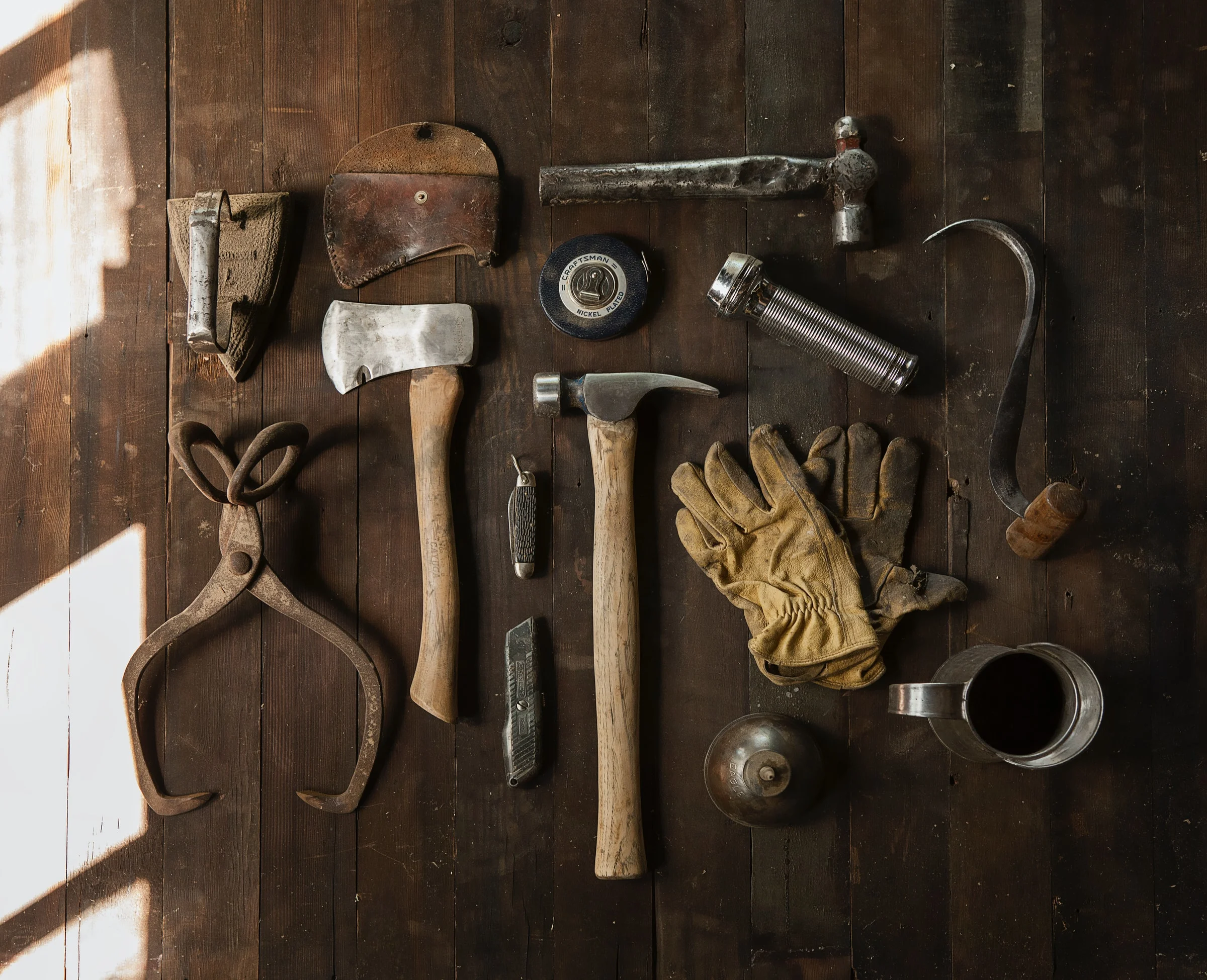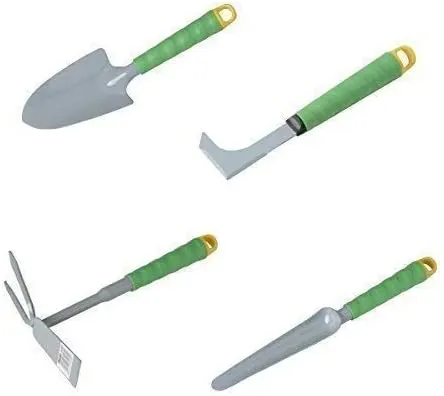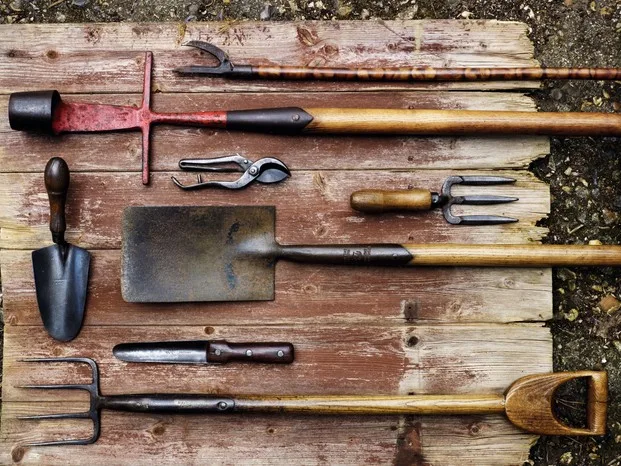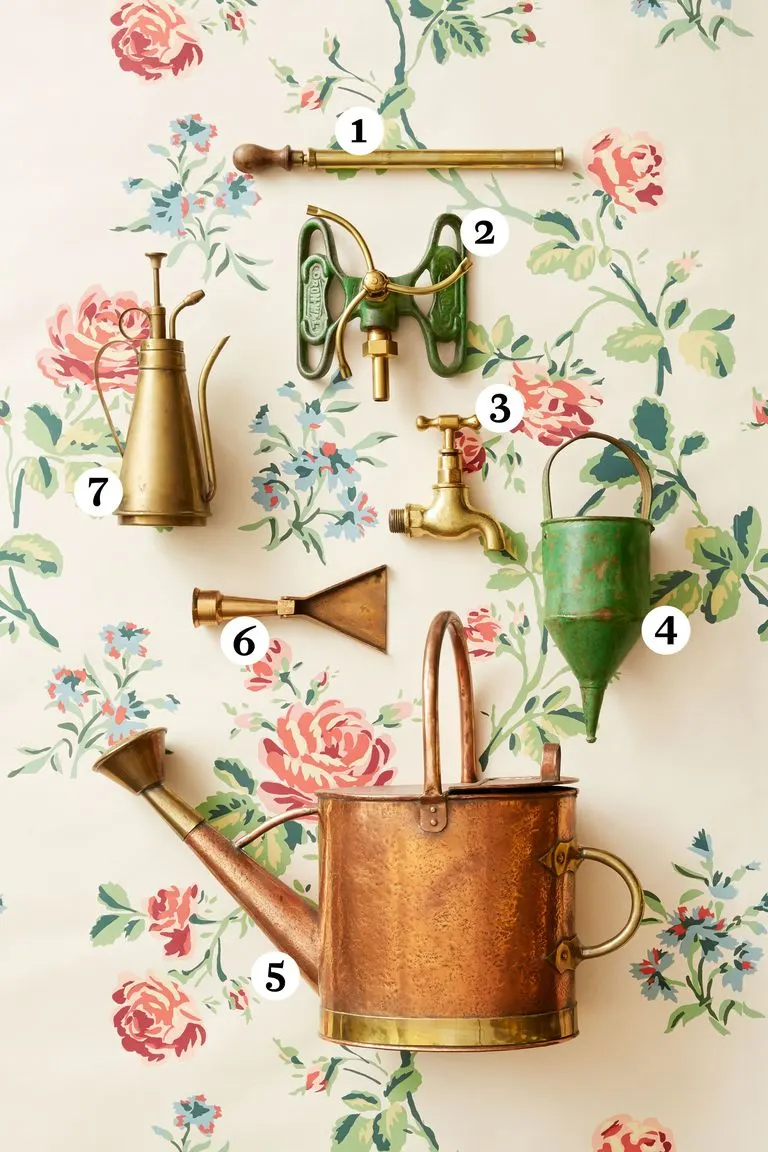- History of Smith-Corona Typewriters: From Shotguns to Spell Check - December 27, 2021
- Vintage Navigational Tools (And How They’re Useful Today) - December 25, 2021
- A Guide to Prohibition Era Clothing & Styles - December 23, 2021
Elaborately manicured gardens of sprawling estates may have gone the way of the dinosaurs. The gardens of the super-rich today are likely to be more informal, and are maintained by landscape crews with mechanized equipment.
But there was a time when even modest homeowners had extensive gardens.
Planting areas that originated in 18th Century America combined the practical necessity of producing food with the visual delight of growing flowers and ornamental shrubbery.
From the mid-1800s, and extending into the early 20th Century, specialized tools developed right alongside the plants to speed the work of sowing, tending and gathering, and to cultivate efficiency as well as beauty.
Vintage Specialty Garden Tools

Specialized tools included apple pickers and asparagus knives, berry pickers and flower scissors were found in a variety of sizes and forms. And they were popular and widely used in various parts of the world.
Some tools, including simple woven baskets and hastily-made child-size implements, had innate practical purpose but were crudely made and probably required replacement each succeeding season.
Still other vintage specialty garden tools — dusting bellows and moss scrapers, for instance — speak of bygone times that are now long gone.
Some, including bird and cat scarers, may seem laughable today, even though farmers still plant scarecrows at the ends of their corn rows.
Uniquely Beautiful

Vintage tools themselves were often beautifully wrought, especially during the Victorian era, when ornate embellishment of even functional household items was the norm rather than an exception.
It was also a time of infinite specialization for garden tools as well as cooking and serving implements; a time when every nuance of daily life seemed to be well-defined and controlled.
No matter what type of garden it was, specialty tools were used to manage seeding and sprouting, enhance cultivation and ease harvesting.
Not only were they serviceable and designed for specific purposes, but some are rare and many are now considered extremely collectible.
Both in terms of dollar value, and as resources that offer insight into the lifestyle of the times, vintage garden tools range from sturdy and practical to whimsical and inventive.
Whether made by hand or manufactured, they are often distinctive, and their purpose is immediately recognizable.
Specialized clothing, shoes and hats, collecting baskets and storage containers, and the colorful seed packets of the time also fall within the realm of garden collectibles.
Gardens and gardening were serious pursuits, made more enjoyable by the variety of tools and associated paraphernalia.
Classic Garden Tools

The classic tools — garden hoes, spades, rakes, trowels, tillers, diggers, weeders and shears — are familiar to anyone who has ever worked a garden bed.
Most homeowners today also know the value of a leaf rake, a lawn aerator and a hand hoe.
But if you don’t know the specific purpose of a square hoe versus a triangular hoe, or recognize the need for a narrow trowel, a three-tined rake and a dedicated dandelion-digger, you are probably not alone.
Although they are available at modern big-box stores as well as specialized garden centers, such tools are probably not found in the average suburban garage.
But in the late 1800s they were common in a typical garden shed.
Today, if you prefer worn over new, you can find older tools in used but still serviceable condition at flea markets and garage sales, as well as through online auction and retail sites.
Prices are usually based on condition, and tools with little historic value are quite reasonable.
Child-size tools are especially charming and readily available. They are also a great way to introduce the younger set to gardening; playing in the dirt is every bit as much fun for a youngster as watching video!
Antiques and Collectibles
If you have an interest in historic garden tools or in farm implements from the late 19th Century, the search may lead you to old barns and garages and through piles of rusty examples before you find something special.
Three general categories of garden tools include:
- Diggers: The tools that were used to work the soil, to remove rocks and roots, to smooth and shape planting areas, and to prepare the soil for planting fall into this category, whether they were designed to be used while standing up or kneeling to accomplish fine finish tasks.
- Planting, Growing and Gathering Aids: Some of the most interesting vintage gardening tools fall into this category: The effort to rid gardens of destructive pests spawned noisemakers and decorative devices designed to scare critters, to eliminate caterpillars, mice and moles, and to scrape moss from tree bark.During this time, garden bellows were also used to distribute fine powder like DDT (now banned) to kill insects. Pruning and trimming tools often have metal hooks, blades and shears attached to fine wooden handles; larger scythes and sickles are beautifully shaped and well-balanced.
- Water Delivery: Not only watering cans, but also ewers and containers of varying sizes and shapes, cisterns, bird baths, decorative brass hose bibbs, hand sprayers and mechanical contraptions have been used at various times to collect and deliver water and nutritional supplements to the garden.Today they are prized decor additions, not only for the garden, but for garden rooms, patio display and unique small planters.
Variety and Value

No matter what types of vintage gardening tools strike your fancy and attract your attention, you are likely to find examples in a wide variety of price range and condition.
Sturdy Edwardian wrought iron might command top dollar, while rustic Southern children’s tools and rusted wagons can be bought for a song at farm sales and trades day booths across the country.
From wooden dibbles and tool caddies to garden art fabricated from rusty saws, old wheelbarrows and handle-less rakes, vintage gardening tools can be a way to bring the past alive in a modern garden.
For an overview of some of the more popular and more available examples of tools from the past, browse Pinterest boards, keep your eyes open for ideas and open your mind to inspiration.
